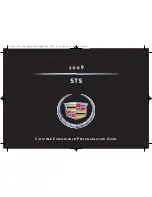
157
Driving Tips
switch is turned to the “ON”
or “START” position.
5. Check all gauges (including
the fuel gauge).
6. Release the parking brake
(and make sure the “BRAKE”
light turns off).
See related topics in this manual if
you find any problems.
Starting the Engine
1. Apply the parking brake.
2. Manual Transmission: Press
the clutch pedal to the floor
and shift the transmission to
the Neutral position. Hold the
clutch pedal to the floor while
you are starting the engine. A
starter safety switch keeps the
starter from operating if the
clutch pedal is not fully
depressed.
Automatic Transmission:
Place the shift lever in “P”
or “N” position (“P” is
preferred). A starter safety
switch prevents the starter
from operating if the shift
lever is in any drive position.
If it is necessary to restart the
engine with the vehicle
moving, place the shift lever
in “N” (never in “P”).
3. Do not touch the accelerator
pedal. Start the engine by
turning the ignition switch to
“START.”
If the engine does not start in
10 seconds, wait 15 seconds to let
the starter cool down. Then crank
the engine at wide open throttle
for a maximum of 10 seconds. If
the engine still does not start, wait
another 15 seconds and repeat the
entire procedure.
Do not crank the engine for more
than 10 seconds at a time. Wait 15
seconds before trying again.
4. Return the ignition switch to
the “ON” position as soon as
the engine starts.
5. Apply the regular brakes and
shift into the proper gear.
Release the parking brake and
brake pedal and drive off.
In models with an automatic
transmission, you cannot shift
from “P” (Park) position to
any other position unless the
brake pedal is applied.
















































